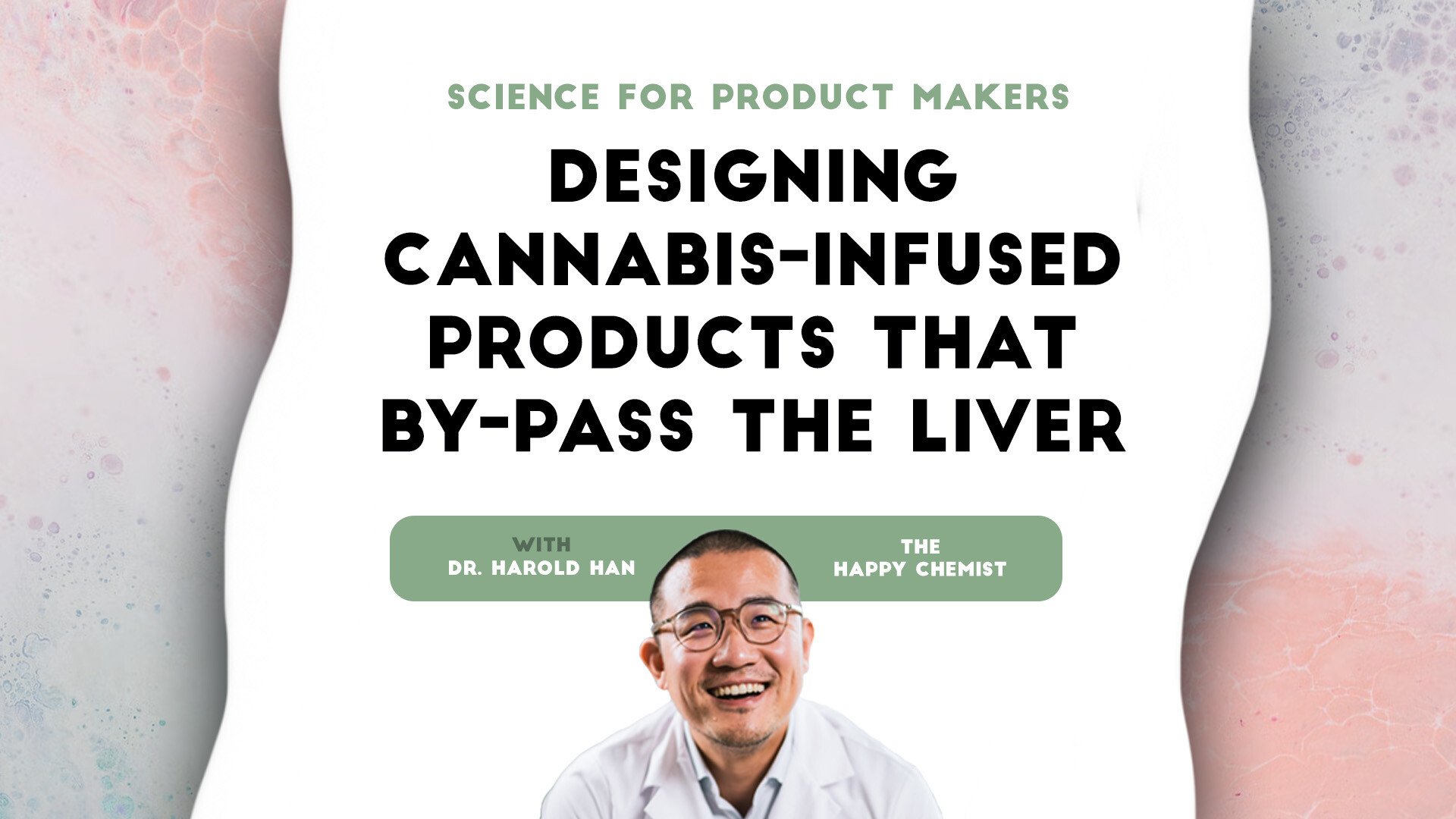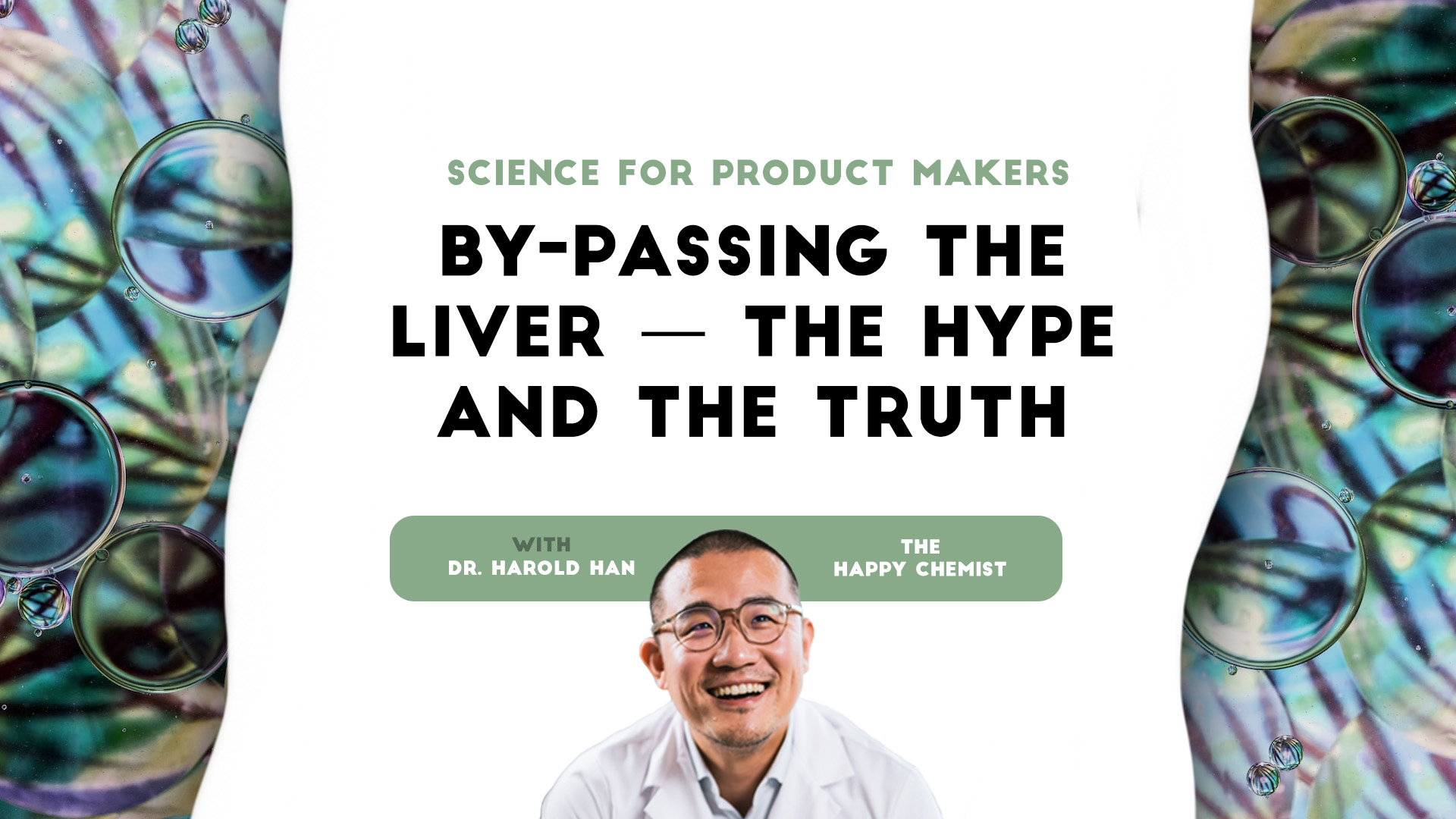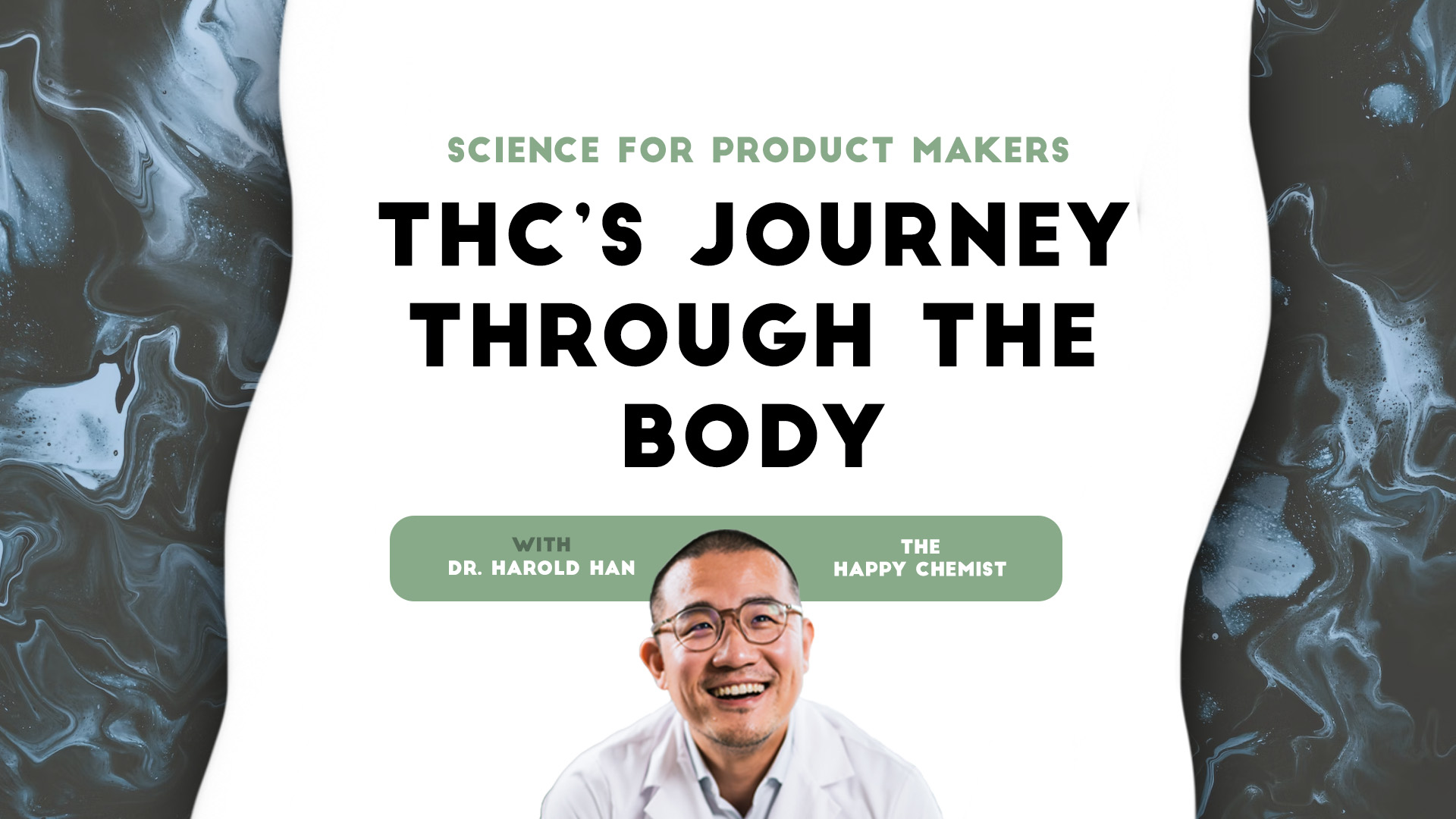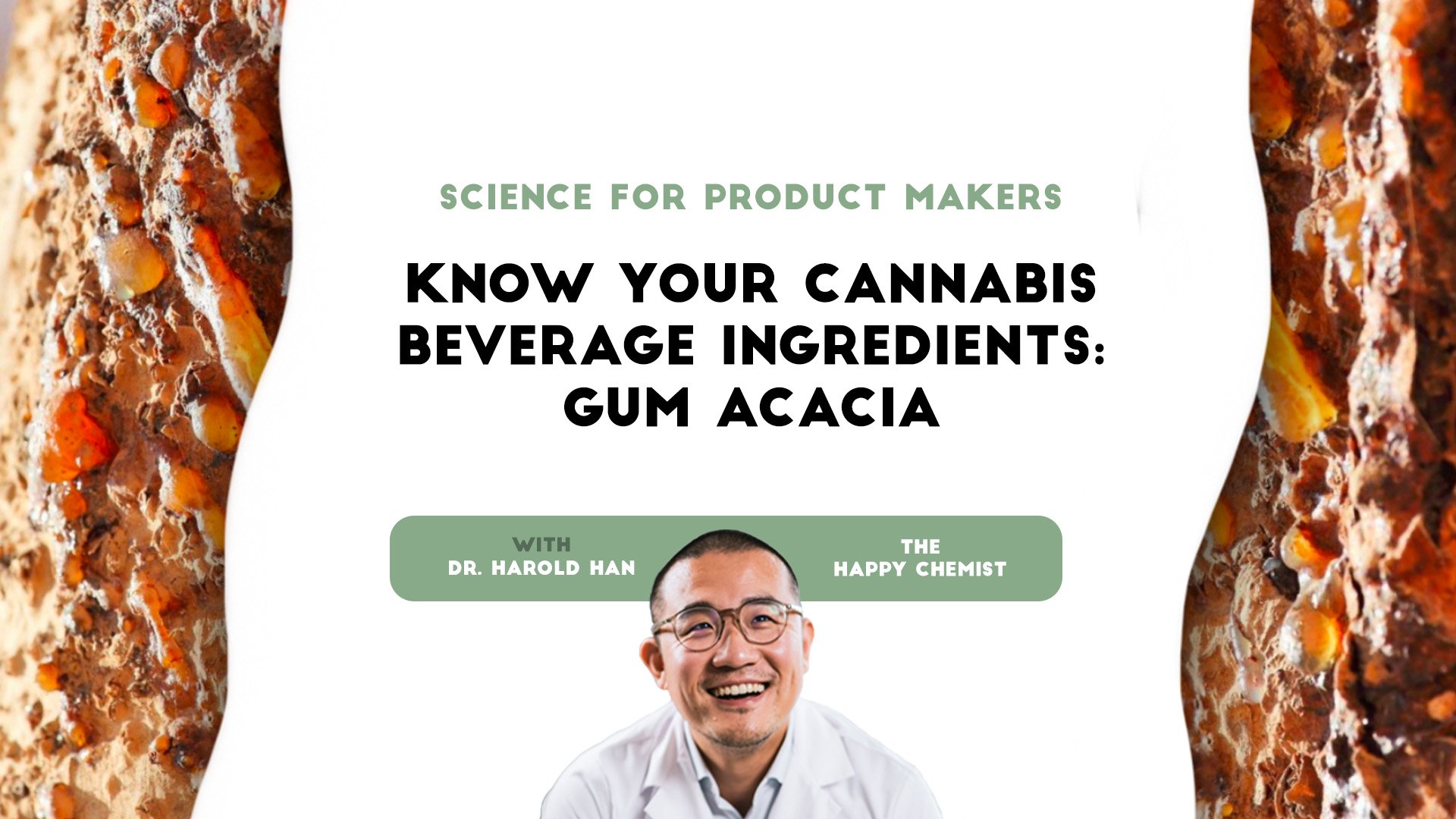Science for product makers: By-passing the liver — the hype and the truth
This post is also published as an article on Harold's LinkedIn profile. You can read and leave comments here. Our liver is a well-trained bodyguard...
3 min read
 Dr. Harold Han - "The Happy Chemist"
:
6/28/24 4:58 PM
Dr. Harold Han - "The Happy Chemist"
:
6/28/24 4:58 PM

This post is also published as an article on Harold's LinkedIn profile. You can read and leave comments here.
My last post discussed the hype and the truth around the benefit of by-passing the liver in the cannabis industry. Since the post, lots of people have asked me about effective strategies to design a cannabis product that by-pass the liver. I am happy to share some thoughts.
The most efficient strategy for by-passing the liver is to deliver cannabinoids into the bloodstream avoiding oral intake. The pharmaceutical industry already uses these 5 main methods to achieve this goal:
Our industry can not be more familiar with this method. Smoking and vaping will get cannabinoids absorbed through the lung directly into the bloodstream. Legacy consumerswill never stop indulging this way of consumption.
This is the most efficient drug delivery among all because every single cannabinoid molecule in the formula will be flowing in the bloodstream immediately after injection. This truly defines 100% bioavailability for any drug active, however this method is definitely more appropriate for medical applications than recreational purposes. (Source)

Fig. 1
A suppository can be very efficient in delivering cannabinoids through the rectal or vaginal walls into the bloodstream. There are already cannabis-infused suppositories that focus on health and wellness.
Either by a cream or a patch, drug molecules can be delivered through skin absorption into the bloodstream.
Our skin consists of two main layers, epidermis and dermis. The epidermis is the outermost layer of the skin and serves as a barrier to protect against environmental factors such as UV radiation, chemicals, and pathogens. The dermis is the layer of skin beneath the epidermis and is responsible for providing strength and elasticity to the skin. The dermis also contains blood vessels and nerves.
For a drug molecule to enter the bloodstream, it needs to penetrate all the way through the epidermis and reach the dermis layer where it can potentially enter the capillaries (bloodstream).

Fig. 2
The Franz Diffusion Cell is the most commonly used method to test certain formula's skin penetration efficiency (see Fig.3). The formula is put into the donor well, where it sits directly on top of a patch of simulated skin for a designated time period. The receptor well is tested to confirm how efficiently target molecules penetrated through.

Fig. 3 - The Franz Diffusion Cell
In practice, however, it can be tricky to maintain consistent drug delivery through skin because the drug penetration rate can be affected by many factors such as drug hydrophobicity, skin thickness, cleanliness and hydration. I am eager to see more innovation and research in the cannabis space designed for transdermal delivery.
I am most excited about this delivery method due to its ease of use, quick onset and high repeatability.
First, we need to understand that buccal and sublingual regions of the mouth are the most likely to absorb cannabinoids. The buccal region includes the gums, inner lip and cheeks. The sublingual region includes the ventral side of the tongue and floor of the mouth (see Fig. 4).

Fig. 4
The mechanism of mucosal absorption is simple: drug molecules diffuse from higher concentrations to lower concentrations. Since the diffusion takes time, it is important to allow enough contact time to maximize absorption.
For example, a pouch designed to sit between the gum and the inner mouth can consistently diffuse a drug into the gums. On the contrary, a lozenge may stimulate saliva to wash off and shrink its size within a short period of time. This leads to shorter contact time for the lozenge to diffuse and deliver cannabinoids into the mucus area.
There are many other product form factors that can facilitate mucosal absorption, such as mouth spray, chewing gum, hard candy and dissolvable strips. When designing those products, the key consideration is how to let the product sit in the mouth for a longer time without being swallowed. Once swallowed, they follow the edible route that leads to liver metabolism.
If designed correctly, a mucosal product would offer a super quick onset. In the pharmaceutical industry, those product types are usually designed for cardiovascular, analgesia, sedation and antiemetics, all of which request immediate symptom relief.
The downside of mucosal delivery? Since the total sublingual and buccal area is small, there is an upper limit to how much of the drug can be absorbed daily — a variable that needs to be taken into consideration.
In summary, the pharmaceutical industry has paved the way for alternative delivery methods that allow cannabis products to by-pass the liver, potentially offering higher bioavailability and quicker onset. I am excited for the future of cannabis as more scientists and formulators develop infused products designed to achieve those goals in the next decade.
Dr. Harold Han — the “Happy Chemist” — combines his storied background in emulsion chemistry and science with curiosity and fascination in the rapidly growing cannabis industry. Developing nano and micro emulsions his entire career, Harold holds a Ph.D in Surface Chemistry from NYU and is the inventor of multiple patents in emulsion chemistry.
As the Chief Science Officer at Vertosa, Harold spearheads the company’s development of industry-leading and customized active ingredients for infused product makers, offering pre-suspended aqueous solutions to create incredibly homogenous and stable products while maximizing bioavailability, clarity, and taste.
To learn more about the science of cannabis, check out Harold’s Happy Chemist videos.

This post is also published as an article on Harold's LinkedIn profile. You can read and leave comments here. Our liver is a well-trained bodyguard...

This post is also published as an article on Harold's LinkedIn profile. You can read and leave comments here.

This post is also published as an article on Harold's LinkedIn profile. You can read and leave comments here.